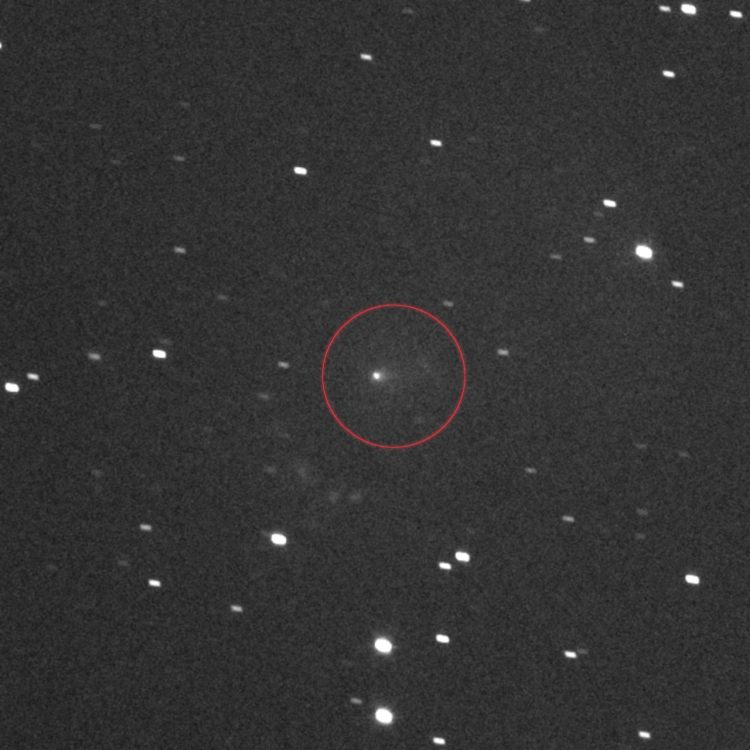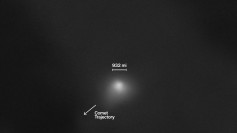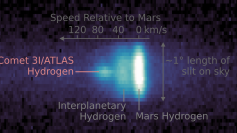NASA's latest release of imagery for interstellar object 3I/ATLAS has triggered new scientific and public scrutiny as the comet-like visitor moves toward its mid-December flyby of Earth. The agency's 19 November publication of HiRISE camera data, taken from the Mars Reconnaissance Orbiter, prompted immediate criticism from Harvard astrophysicist Avi Loeb, whose remarks have revived debate over whether the object's unusual trajectory and physical behavior warrant further examination for possible non-natural origins.
Discovered on 1 July 2025 by Chile's ATLAS telescope, 3I/ATLAS is only the third confirmed interstellar object to enter the solar system. Its hyperbolic path, size, and spectral anomalies have drawn attention from research groups as well as amateur astronomers who have produced independent images showing long-range jet activity and brightness variations. The contrast between NASA's official release and data circulating online has intensified questions about how the object should be classified.
Loeb, writing in a Medium post and speaking in interviews, sharply criticized NASA's image set, calling the product underwhelming and quoting Sherlock Holmes: "There is nothing more deceptive than an obvious fact." The HiRISE camera captured the object at a distance of 0.2 astronomical units-roughly 19 million miles-rendering it at 30 kilometers per pixel and appearing as what Loeb described as a "fuzzy ball of light." Loeb said the images lacked emphasis on what he called "far more exciting" amateur observations of collimated jets extending up to a million kilometers.
His critique was amplified by comments across social platforms, including one widely shared post asserting: "NASA is being deceptive... jets seen by amateur astronomers... did not receive emphasis." The release followed a 42-day government shutdown that delayed data processing, adding fuel to speculation about whether the agency was withholding information. Loeb argued that NASA's imagery reflects only surface "ices and dust," suggesting that an accumulated layer could conceal a technological core picked up during interstellar travel.
Several of Loeb's long-standing concerns resurfaced with the HiRISE release. He cites 12 anomalies he believes challenge a natural explanation, beginning with the object's mass-estimated to be a million times greater than ʻOumuamua and far larger than 2I/Borisov. Loeb argues such a rare outlier should statistically appear only after "a million similar objects" unless it was "intentionally targeting" the solar system. He also points to its retrograde trajectory, aligned within five degrees of the ecliptic plane, which he calculates as having a 0.2% chance of occurring randomly.
Imagery from The Virtual Telescope Project on 11 November, showing what observers described as powerful jets resembling "rocket thrusters," has contributed to wider public interest. Coverage in Economic Times highlighted these features, even as astronomers such as Penn State's Jason Wright cautioned that Loeb's interpretation of the data overstates the case for artificiality. Still, Loeb maintains that the odds of an engineered origin remain between 30% and 40%, urging "data over dogma."
The debate has drawn forceful reactions across scientific forums. Reddit's r/space community criticized Loeb's speculation as "bad-faith 'just asking questions'" rhetoric that fuels accusations such as "NASA IS LYING!" Online posts have expanded into broader claims, including one warning from an account saying: "NASA... will not release them to the public for unknown reasons." NASA maintains it has found no technosignatures and recently reiterated, following its Psyche trailing observations on 8 September, that no artificial indicators have been identified.
Loeb defended his call for transparency in an interview with NewsNation, stating: "What they uncovered was the 'skin' of the object ... some ices and perhaps some dust that evaporates when the sun illuminates that surface," adding: "Even if you consider spacecraft that travels through the core of the interstellar medium, it would accumulate over time - ices and dust on it." He continues to argue that the unexplained anomalies merit deeper review rather than dismissal.
Confusion over unrelated cometary activity has added noise to the discussion. Local reports clarified that recent fragmentation observed in C/2025 K1 (ATLAS) does not involve 3I/ATLAS, which remains intact and on course for its closest approach. The object's rapid recession-more than 200,000 kilometers per hour as it departs the inner solar system-limits remaining opportunities for observation. The Hubble Space Telescope's final imaging window closes on 15 December, and the James Webb Space Telescope is no longer scheduled to monitor it.




